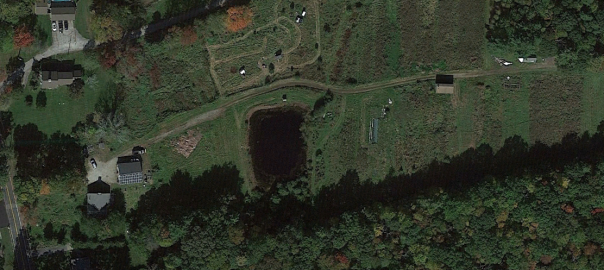The United Nations Agenda 2030 focus on “15-minute” Smart cities for living and working leaves much to be desired for those who desire a life closer to nature working with their hands. While some people enjoy or don’t mind it, there are many of us who do not wish to be stuck in a city job being on incessant zoom meetings and cell phone calls. And while it sounds nice and convenient to have everything you need within 15 minutes of your home and to work from home, this is something similar to what indigenous people had for centuries in their villages, without the need for an overly technological so-called “Smart” city that requires the consumption of vast amounts of mineral and energy resources to keep it going. The materials that make a “15-minute” city possible do not take 15 minutes to get there, as it takes a lot of energy and time to mine the metals (e.g. lithium, copper, coltan, etc.), process them, manufacture them into an item that is then shipped by ship and/or truck to the store (a journey that may be thousands of miles long) that is actually within 15 minutes of a persons home.
Also, many of the “Smart” cities are places with the most sophisticated surveillance technologies and hence, had the most stringent pandemic restrictions from 2020 to 2022. These do not seem to be places that allow for much personal freedom or exercising your personal sovereignty. What happens when your small business is again determined to be “non-essential” during the next perceived crisis and response (e.g. climate lockdowns)? Many alternative thinkers even go as far as to say these cities will become more like open-air prisons than actual cities (this already happened to an extent in many cities during the pandemic).
What about going back to the grassroots focus on designing ecovillages or towns where people work together on their own terms without bowing down to a large governmental entity? A village or town where people can work with their hands farming, fixing/maintaining equipment, cooking, repairing shoes/clothes, weaving, etc. Also, what about a focus on repopulating small towns in rust belts across the world? These places have been decimated by WTO free-trade agreements, lack of investment, and propaganda that paints cities as “the places to be.”
Living in a small town, closer to nature, one can imagine that it would be easier there to become less reliant on the global economic control structure, to reestablish connections to natural ecosystems, and to live a slower-paced life. Now, it may seem that you have to drive more living out in the rural small town areas but that is only because many of these towns have been economically and socially devastated over the decades. By rebuilding the socioeconomic fabric of these small towns people would then be able to drive a lot less as the things they need would be made in the town and many of their friends and family would be there too.
Agenda 2030 co-opted Grassroots Environmental Movements
I was thinking back to the late 2000s and early 2010s when the Transition Towns, Permaculture, and De-growth movements were really taking shape and there was a fast growing public interest in these grassroots movements. We were going to solve most of our environmental, energy, and social problems on our own terms in our own towns. This local-living environmental zeitgeist has now been largely co-opted by the globalized governments that will now dictate what the “15-minute” cities will look like (these are also just culminations of trends that have been building up over the last few decades):
- Large Amazon warehouses, Walmart stores, and Home Depots instead of mom & pop retail shops along main streets
- 4-5 story expensive condo buildings that all look very similar (see photo below) instead of dense affordable eco-villages or towns each with their own unique architecture surrounded by small regenerative farms
- Expensive schools and colleges that train students to become cogs in the techno-industrial complex instead of affordable education “pods” where students learn self-reliance skills, nature connection and have more fun
- Total surveillance network consisting of large 4G cell towers and 5G small cells that can pinpoint any person’s location within a few meters 24/7
- Digital passports, IDs, Carbon Credits, and/or Social Credit Scores dividing people into “Acceptable” and “Unacceptable” (dissidents to the established government, look what happened to the unvaccinated from 2021 to 2023)
- Large incomes required, since the people are largely removed from nature and tight-knit communities they must rely on money and long work hours to meet their needs instead

Conclusion
While some of the urban developments around transportation nodes (e.g. train stations, bus stops) make sense from a “weaning off fossil fuels” perspective, many people are not attracted to these expensive condos and apartments and desire a more nature-oriented life (further discussed in this post on voluntary simplicity). Also, many cities have recently been struggling to maintain their public transportation systems (e.g. the MBTA in Boston, MA), so it is difficult to see how these 15-minute Smart cities will really live up to the hype. Though, having lived in Boston (back when rent was moderately affordable) for several years with just a bicycle when I was younger, I can say it is an enticing lifestyle. However, now as I near mid-life I am taking steps to live a slower-paced life closer to nature.
Here is an example of a few people working on reconnecting with nature, simpler living and alternative education:
Jon Jandai’s Video Channel (https://www.youtube.com/watch?v=AJRGqIuGVko). Jon is a self-reliant farmer from Thailand who lives in what he terms an “unintentional community.” One of his videos is titled “How to fight with dictators in a villager style,” which is quite pertinent to this post.
Dr. Edith Ubuntu Chan’s Website (https://www.dredithubuntu.com/). Dr. Chan is a pioneer in alternative health and education.
